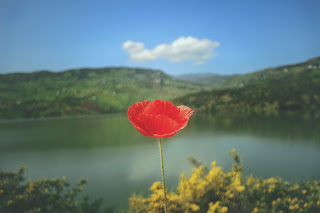Tips on How to Know You Are Buying Genuine, Pure Essential Oils
You have decided to start using essential oils. There are so many sources to buy essential oils, you are simply overwhelmed trying to decide. Most of them say, their oils are the purest and genuine. How do you know their claims are true?
On the label, there should be some uniform information that can help you decide which oils are fake and which oils are actually genuine. This information should also be in their catalog or on their websites. Here is what you should look for when searching for genuine essential oils.
On the label, there should be some uniform information that can help you decide which oils are fake and which oils are actually genuine. This information should also be in their catalog or on their websites. Here is what you should look for when searching for genuine essential oils.
- Common name plus the Latin names (the Latin name is made up of two parts, genus and species)
The genus is the category of plants similar in botanical structure and is the first word always italicized and capitalized. For example: Lavandula. The species name tells you the exact plant within a specific genus. The species name is actually the full Latin binomial and is represented in the second part of the name. The species name is always italicized and always in lower case. For example: Lavandula angustifolia.
On the label of a bottle of Lavender, you should find it to look like the following:
Lavender, Lavandula angustifolia or Lavender, Lavandula stoechas. There are several species of Lavender used in Aromatherapy. Several essential oils have more than one species. These different species will make the oil smell different as well as have different therapeutic properties. So, it is highly important the Latin name appears on the bottle for correct identification of contents within the bottle. All pure and genuine bottles of essential oil will have both the common and Latin name listed most preferably on the bottle, but at least on the seller's website or in their catalog of products.
Another important clue that an essential oil is genuine essential oil is if the seller or manufacturer of the oil lists the part of the plant the oil is out of. For example: Is the plant part the bark or stem or the seeds, the wood or the flower tops? It should be listed somewhere in their sales materials.
A reputable aromatherapy supply company should also be able to tell you how the plant was grown. You should look for categories as follows:
- Ethical Wild-crafted: Plants collected in the wild or their native environment
- Cultivated: Plants specifically grown to be distilled for essential oils
- Traditional/Conventional: Plants that have been grown with the use of pesticides.
- Organic: Plants grown without the use of pesticides and that fulfill organic guidelines set out by independent agencies.
A reputable aromatherapy supply company should also be able to readily to tell by what process the essential oil came from such as expression or steam distillation method, etc.
The aromatherapy supply company you purchase from should also provide standard safety warnings on each oil. For example: An oil that absolutely cannot be taken internally, should have this warning displayed. An oil that absolutely should not be used on children or directly on the skin should have this warning stated.
You should find the amount of essential oil in each bottle for sale. This number is usually listed in milliliters.
Never purchase an essential oil product that is packaged in plastic. Essential oils are sensitive to heat and light. It has long been an accepted practice of the aromatherapy industry to store essential oils in dark-colored glass. You will find dark blue, dark green and amber glass bottles for the packaging of essential oils and products made from essential oils. If your supplier does not package using the dark glass bottles, then the oil is not worth purchasing or even looking further for names, the Latin name or anything else. It is a fake essential oil.
Another important aspect of an essential oil bottle is the orifice reducer. This is the small dropper insert that fits into the opening of the essential oil bottle. Eye droppers should not be used on an original bottle of essential oil. It has to have the orifice reducer insert to be authentic (along with these other factors I have listed). You can of course buy a dark glass bottle with the appropriate orifice reducer and it still be an inferior product. All genuine oils will have the appropriate orifice reducer along with these other aspects I have mentioned.
I keep all my essential oils in the refrigerator. I feel this is the place for them. They absolutely need to be stored in a cool area away from direct sunlight and heat.
Here is a general idea of how long essential oils will keep, and this is only if you keep them stored properly away from heat and sunlight:
- Pine, spruce, hemlock, frankincense, lemongrass, neroli and tea tree: 1 to 2 years
- All other essential oils: 2 to 3 years
- Vetiver, patchouli, sandalwood: 4 to 8 years
- Citrus oils like lemon should be changed out about every 6 to 8 months
Connie Limon, Certified Aromatherapist, Level 1
Learn more in my Facebook
group here: https://www.facebook.com/groups/healthwellnessusingessentialoils/about/





Comments
Post a Comment